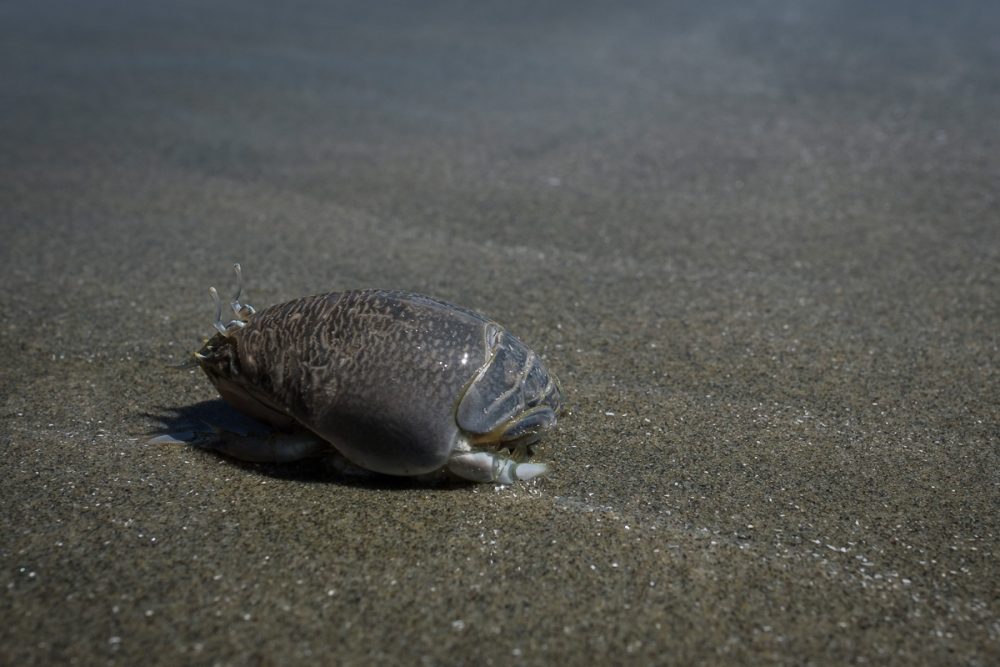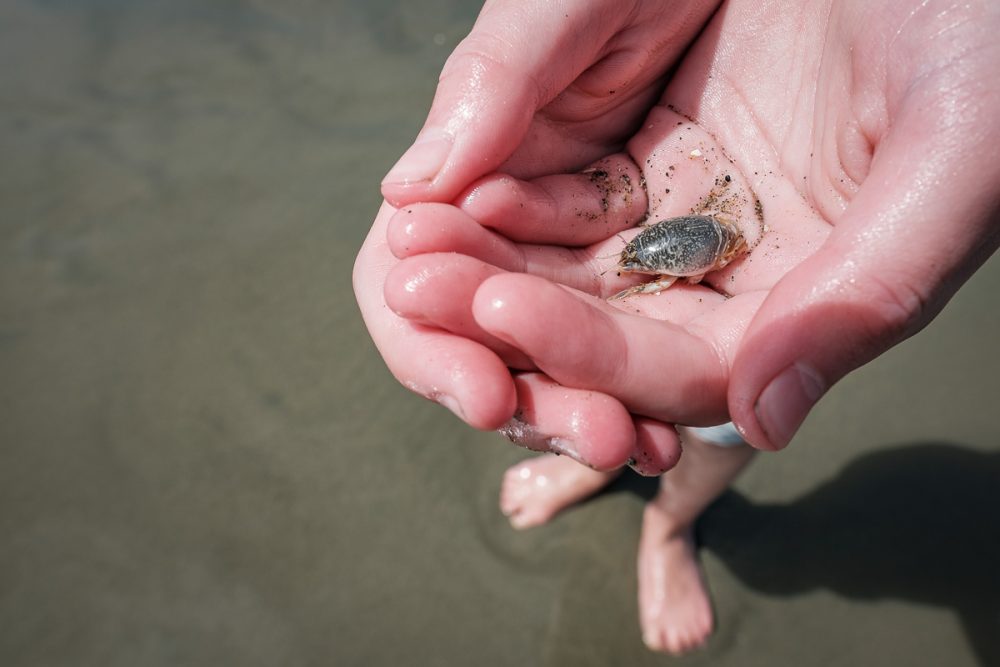Five years ago, Pacific mole crabs (Emerita analoga) appeared dramatically on the exposed beaches of Pacific Rim National Park. The huge numbers that showed up in 2016 was astounding. At the time, I wondered if they would survive and establish themselves. The odds seemed long. Prior to 2006, there had been sporadic reports of influxes of mole crabs (notably between 1958 and 1960) on the west coast of Vancouver Island. Historic records show that populations north of Oregon were rare and short in duration. I’ve looked for mole crabs every summer since then and have found them consistently. This leads me to believe that they’re here to stay.

Where to Find Mole Crabs
Pacific mole crabs love the dynamic, sandy beaches of Pacific Rim National Park Reserve and are one of the few creatures that can survive here. Typically they are active in the swash zone, moving with outgoing water and burrowing down into the sand. It is challenging to see them at first because they look like round stones rolling out with the waves. Good strategies are watching the active surf for movement or the sign of a burrowing crab. The feeding antennae make a v-shaped wake in the water and this is a good indicator that there is a crab below. A stretch of wet dimpled sand is also a good sign that mole crabs may be present.

I’ve found these delightful crabs at Wickaninnish Beach, Long Beach, and Florencia Beach. My kids love searching for them and digging them out of the sand. We take a quick look and then return them, watching them burrow back down into the wet sand where they will wait for the next incoming wave. Making sure that hands are free of contaminants like sunscreen is important if you do this. You can also keep the wet sand in your hands to provide them some natural material to burrow into.

Surfing the Waves
Pacific mole crabs are active in the upper swash zone. Like the surfers who have come to the west coast, they’ll ride the wave in for a meter or so before burrowing back down into the sand facing shoreward to wait for the water to flow out again. As the water retreats, the crab extends long feathery antennae to capture plankton and other detritus in the water. They repeat the process, moving in and out with the tide.
Mole crabs range in size from 2 cm to up to 3.5 cm. Female crabs tend to be larger than males and when breeding will carry bright orange eggs underneath. The crabs are oval in shape and have a smooth shell which is advantageous for digging into the sand. When the crab is flipped over, an elongated telson is visible. The crab uses the spade-shaped telson and specially modified legs to quickly dig into the sand. Movement of the crab liquifies the wet sand and the legs pass it up to the surface as the mole crab digs deeper. Check out this awesome video that shows how mole crabs dig quickly into the wet sand!

Are they Here to Stay?
Historically, the northern range of the Pacific mole crab is in Oregon. During El Niño events the population expands into Washington and further north. Usually, these expansions are temporary and after a year or two mole crabs disappear.

The fact that mole crabs have become common on the west coast beaches suggests that something has changed. Many of the crabs that we found at Wickaninnish Beach were large, egg-carrying females. Large numbers and reproductive females point to an established population of mole crabs. Likely the success of this species is related to changes in water temperature and the warming of the ocean off of Vancouver Island. Their continued presence here is a warning sign that the climate is changing.

The mole crab story is fascinating. It begins with an arduous initial journey and arrival as free floating larva back in 2016. The story continues in the present day with a successful settlement on the exposed beaches of the west coast. I’d like to think that they’re here to stay on Vancouver Island but only time will tell.